Clematis is considered the king of the garden. It is difficult to take your eyes off a vibrant flower waterfall. Most varieties of clematis are hybrid. They are bred vegetatively: by cuttings, layering, dividing bushes. The seed method is only suitable for varieties with small flowers.
Content
Advantages and disadvantages of autumn cuttings
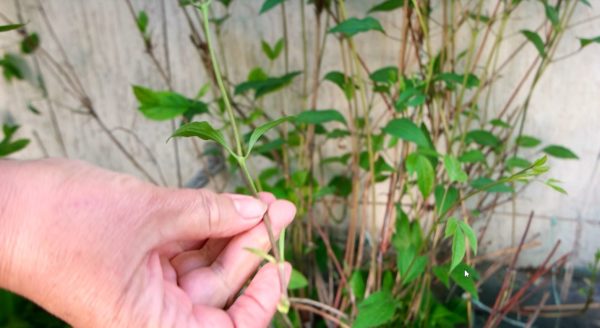 The formation of clematis bushes occurs in the fall. Circumcision must be carried out for this type of plant. It improves development and growth, promotes spring awakening of the kidneys. During the formation, many branches remain, they are cut into petioles, which can be used for planting and propagating plants.
The formation of clematis bushes occurs in the fall. Circumcision must be carried out for this type of plant. It improves development and growth, promotes spring awakening of the kidneys. During the formation, many branches remain, they are cut into petioles, which can be used for planting and propagating plants.
The advantages of planting in the fall:
- plants harden, get used to temperature changes;
- Autumn seedlings outstrip spring bushes;
- in rainy time you do not need to waste water for irrigation;
- in autumn, gardeners have more free time for pruning than in spring, when mass work is underway.
In the spring, the branches have not yet grown after autumn pruning, you can overdo it with pruning. In addition, in the spring the buds swell and the juice moves along the branches. At such a time, it is better not to disturb the vine.
The minus of autumn cuttings is that you can not guess with the early frosts, and the seedlings will freeze before they take root. Cuttings take root in autumn harder than in summer. In the summer, they are rich in biostimulants, they stimulate the appearance of buds.
Methods of breeding clematis
Clematis rarely gives seeds, the seed method is laborious and rarely gives seedlings. If the seeds take root, the bush still loses its maternal properties. There are several ways to propagate clematis. The most common is through the propagation of clematis.
Cuttings clematis in the fall
To propagate clematis by cuttings in autumn, bushes 3-4 years old are needed. After trimming the bush, choose strong healthy branches. Tops with buds are best not to use. Cut the middle part of the shoot without buds, but with 2 nodes and a couple of buds at the base of the leaves. A sharp knife or secateurs are used for trimming, it is better to work with gloves. Growing clematis with cuttings is an easy way to propagate, but in order to wait for plentiful flowering, it will take more than one year of plant life.
Breeding clematis by layering
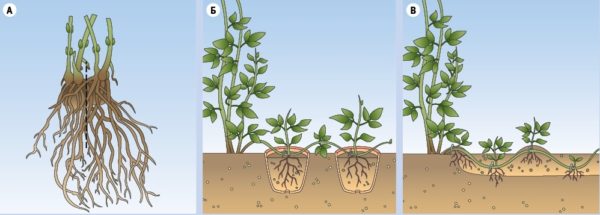 In May or early summer, 2-3 long healthy shoots are selected on the bush. They are laid in small grooves to a depth of 8 cm, you can fix them with a hook, clothespin so that the shoot does not bend. When watering the bush, the place of layering is abundantly watered. When the shoots grow to 15 cm in length, the earth around is covered with mulch. By autumn, new plants can be replanted.
In May or early summer, 2-3 long healthy shoots are selected on the bush. They are laid in small grooves to a depth of 8 cm, you can fix them with a hook, clothespin so that the shoot does not bend. When watering the bush, the place of layering is abundantly watered. When the shoots grow to 15 cm in length, the earth around is covered with mulch. By autumn, new plants can be replanted.
In mid-autumn, all leaves and part of the shoot to the first developed bud are removed from cut branches. Branches are tied, laid in dug grooves. A layer of peat is poured at the bottom of the pits and on top of the shoots, the material retains moisture and has breathability. They fill the ditch with earth and condense it. In spring, this place is well watered and fed with mineral additives. When sprouts appear, the soil is mulched with moss, humus.The next fall, the plants are planted on the site.
Hilling Method
 In summer, you can grow layering for autumn planting. To do this, in June on a growing branch put a box without bottom and top. Pour the soil regularly until the building is completely filled. A part of the branch with two developed buds should remain uncovered. During this procedure, the soil is abundantly watered. By autumn, layering will be ready for landing. Cut shoots at a height of 20 cm from the ground. Spud around the bush with nutrient soil 15 cm high and cover with insulation for the winter.
In summer, you can grow layering for autumn planting. To do this, in June on a growing branch put a box without bottom and top. Pour the soil regularly until the building is completely filled. A part of the branch with two developed buds should remain uncovered. During this procedure, the soil is abundantly watered. By autumn, layering will be ready for landing. Cut shoots at a height of 20 cm from the ground. Spud around the bush with nutrient soil 15 cm high and cover with insulation for the winter.
Bush division
Autumn division is safer than spring division. You can not dig a plant when the awakening of the buds has begun and the development of the bush has begun.
Divide the five-year clematis into small bushes. They dig a bush from the ground, shake it. The rhizome of an adult plant is powerful and long, often it is necessary to undermine the bushes. The whole root is washed in water to see where to divide. Gently disconnect into several bushes. Cut off all the shoots to the second buds and plant them in a new place.
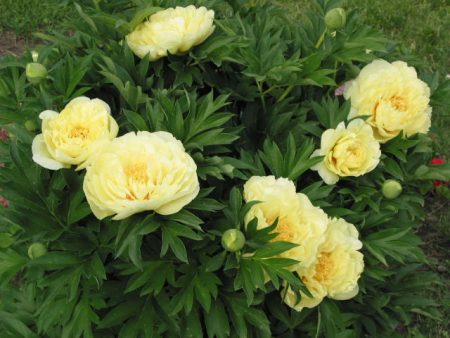 You may be interested in:
You may be interested in:Breeding in water
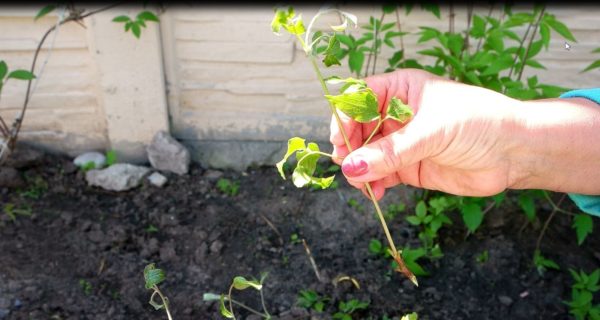 The same process of cuttings, only the roots put in water, until the roots. To transplant young in September, you need to cut the branches and put them into the water around July. Leaves leave, clean only those that will be in the water. Immerse part of the shoot so that one internode is in the liquid. Do not put the container into the light, if this is not possible, then wrap the container with paper. At room temperature, the roots will appear after 30-40 days. With a root length of 5-6 cm, seedlings are transferred to greenhouse soil. It is impossible to overexpose the roots in water - they will become tangled, and the kidneys will dry out.
The same process of cuttings, only the roots put in water, until the roots. To transplant young in September, you need to cut the branches and put them into the water around July. Leaves leave, clean only those that will be in the water. Immerse part of the shoot so that one internode is in the liquid. Do not put the container into the light, if this is not possible, then wrap the container with paper. At room temperature, the roots will appear after 30-40 days. With a root length of 5-6 cm, seedlings are transferred to greenhouse soil. It is impossible to overexpose the roots in water - they will become tangled, and the kidneys will dry out.
Features of Autumn Reproduction
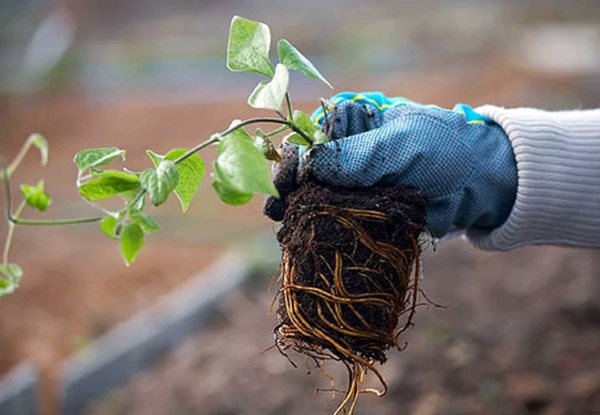 Proper pruning of branches, pruning of petioles, their departure and soil affect the further development of clemitis. Wrong cuts or heavy irrigation can kill young animals.
Proper pruning of branches, pruning of petioles, their departure and soil affect the further development of clemitis. Wrong cuts or heavy irrigation can kill young animals.
Preparation of cuttings
Pruning cuttings is best done during the formation of buds. This is mainly the end of spring - the beginning of summer.
The sequence of harvesting cuttings:
- a slice is made over 1-2 sheets;
- take the middle part of the branch;
- cut at an angle of 45 degrees by 5 cm under the first node and 2-3 cm above the second node;
- large leaves are removed;
- placed in water 1/3 petiole;
- shoots are put for 9 hours in a dark place in a growth promoter: root, sodium humate, heteroauxin;
- After washing the branches under running water.
Soil preparation
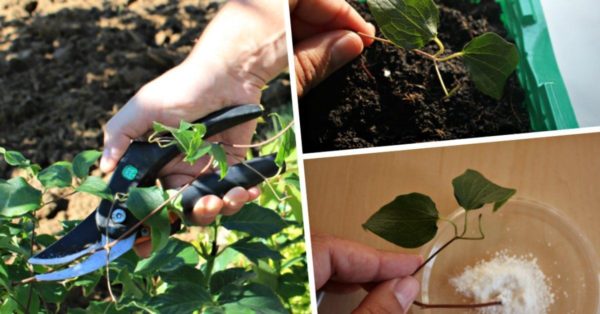 Clematis prefers an alkaline habitat. Soil with high acidity is lime. Prepare light, moisture-resistant and breathable soil:
Clematis prefers an alkaline habitat. Soil with high acidity is lime. Prepare light, moisture-resistant and breathable soil:
- Use composition: sand, humus, peat (1: 1: 1).
- A mixture of river sand and sphagnum moss.
- Land from the garden, peat, humus in 1 part, 0.5 part of sand, 20 g of superphosphate per 5 kg of the mixture.
- Roots can be rooted in coconut fiber, perlite, vermiculite.
Planting and care of cuttings
To achieve abundant flowering should not plant clematis in a sunny place, it is better to choose a partial shade. Do not plant a plant near the iron fence and at the walls of the house. Water from the roofs should not flood the bushes. Do not grow vines in drafts and windy areas.
To root lignified cuttings, seedlings of low-flowering and wild varieties are taken. Branches are cut in August 8-12 cm long with two nodes. After the shoots start up in the water, the roots are planted in boxes for rooting. The lower part of the petiole is deepened by 3 cm. To keep the buds from drying out, the knot is deepened by 1 cm. The distance between the seedlings is 6 cm, and between the rows 15 cm.
To actively build up the root system, care for clematis is needed:- temperature conditions in the room 19-22 degrees;
- the first three weeks the plants are watered a little daily, then enough once every 10 days;
- seedlings need high humidity, they are sprayed 3 times a month;
- regular airing of the room;
- once every 8 days the petioles are sprayed with zircon - a plant growth regulator.
- after rooting the cuttings, the film is removed, in the spring they are dived, and in the fall they are planted in the garden.
How to root a shoot
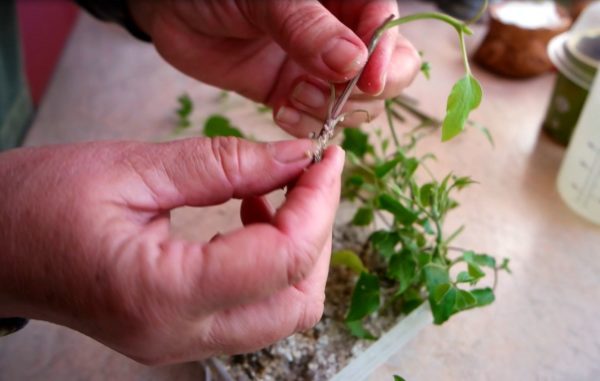 You can grow clematis cuttings in greenhouses, greenhouses, tunnels and in boxes on window sills. If pruning is done in the autumn, then the cuttings must first be rooted and planted in the spring in the ground. There are several ways to grow petioles.
You can grow clematis cuttings in greenhouses, greenhouses, tunnels and in boxes on window sills. If pruning is done in the autumn, then the cuttings must first be rooted and planted in the spring in the ground. There are several ways to grow petioles.
Plastic cups
In a transparent plastic glass you can clearly see what happens to the roots of plants. Use of cups:
- fall asleep with a nutrient mixture;
- for drainage in the container make small holes;
- water the earth;
- they dig a petiole so that the knot is half-filled with soil;
- before rooting the cuttings, cover the glasses with a film.
When the time comes for planting plants from cups, seedlings are transferred to the hole along with the ground in which they grew.
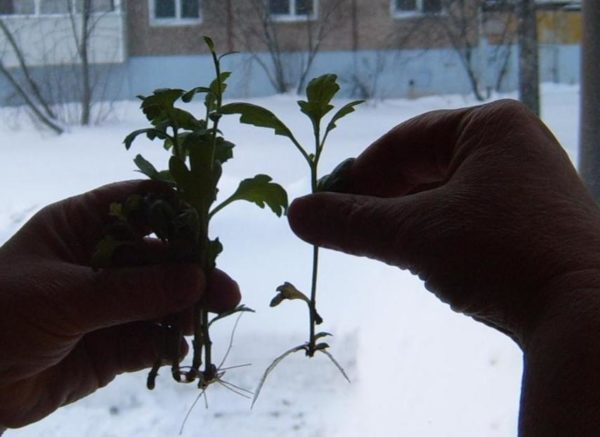 You may be interested in:
You may be interested in:The soil
Petioles are planted in a soil mixture in a film greenhouse. A cardboard box is dug into the ground. The soil must be clean of weeds and harmful microorganisms. It is better to make the soil two-layer. The first layer - peat and sand are poured for drainage with the addition of humus, pour all of the sand on top. Shed with manganese solution. For quick rooting, seedlings are treated with heteroauxin or sodium 2 g per liter of water for 8-10 hours, washed, transferred to the soil.
Water
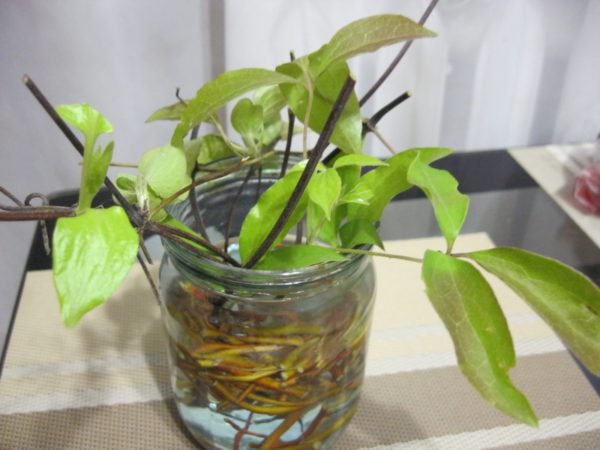 They are used for rooting shoots with wide-necked dishes. Water is poured, twigs are immersed so that only the ends of 1 cm are immersed in the liquid. The container is placed in a dark place. As the water evaporates, it is refilled to the previous level. When the rhizome is 4-5 cm, the shoot is planted in the greenhouse.
They are used for rooting shoots with wide-necked dishes. Water is poured, twigs are immersed so that only the ends of 1 cm are immersed in the liquid. The container is placed in a dark place. As the water evaporates, it is refilled to the previous level. When the rhizome is 4-5 cm, the shoot is planted in the greenhouse.
The bottle
Resourceful gardeners have come up with a way to root flowers using plastic two-liter bottles. This saves space, cuttings take root faster.
The bottle is cut in half. An earthen mixture is poured into its lower part, the seedling is deepened, watered from above, covered with the second part of the bottle. The docking point is connected with tape, the cork is closed. A mini greenhouse is buried in the ground to the level of soil in the bottle. After a couple of weeks, the greenhouse is ventilated - the cork is unscrewed for half an hour a day. When seedlings appear, the bottle is left open, drainage holes are made.
In addition to bottles and cups, plastic bags, pots, and containers are used. Basically, these containers are in flower beds or greenhouses.
The conditions for rooting cuttings in the substrate
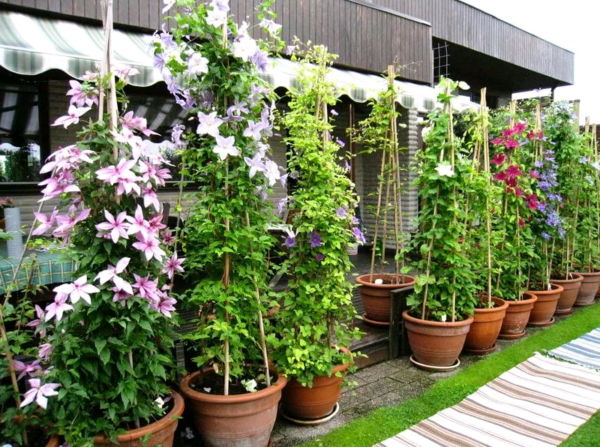 In clematis blooming on last year's branches, cuttings begin before flowering in May or July after flowering. In mid-summer, green stalks are planted in pots, crates or immediately in open ground. At the end of August, shoots of creepers are cut and healthy shoots root only in closed ground.
In clematis blooming on last year's branches, cuttings begin before flowering in May or July after flowering. In mid-summer, green stalks are planted in pots, crates or immediately in open ground. At the end of August, shoots of creepers are cut and healthy shoots root only in closed ground.
Prepared shoots can immediately be planted in fertile soil:
- Individually - cups, bottles, pots.
- Landing in the general cuticle - to follow in this case, the rooting process will not work. The soil is made two-layer: first, the substrate is 20-25 cm, then 5 cm perlite or sand. The earth is leveled, compacted and moistened.
Temperature background
In winter, plants are occasionally watered in greenhouses. Air temperature 3-8 C *. At the end of December, it is increased to 17 C * heat. Since April, grown cuttings are selected for planting. It is good if the temperature background always keeps 20-24 degrees. If the days are hot, then you need to try to lower the temperature: airing the greenhouse, fans, spraying.
Dates for breeding clematis in the fall
The breeding time depends on the state of the shoots. Better if it is a branch that has not yet bloomed. Cuttings begin from the end of August and lasts all of September. If the winters are early, it is better to do the pruning earlier, for example, in July or August, and not wait for surprises from the weather.
Wintering and keeping petioles of clematis
Because how the petioles overwinter depends on their further development. Well, if the buds on the petioles do not wake up, calmly winter, and begin to grow in the spring. In the northern regions, petioles are dug up, planted in containers and stored during the winter season in a cool place, without frost.
Features of wintering shoots:
- for winter, seedlings are covered with a film;
- as soon as the shoots reach a height of 12-15 cm, they are pinched over the second node to accelerate rooting;
- you can leave petioles for the winter in the basement in boxes, pots or in a greenhouse under a film or peat;
- if the greenhouse is not heated, you can cover the shoots with fir branches, sawdust, a special cloth;
- with the advent of spring, young clematis are transplanted to a permanent place in the garden.
In the greenhouse, when the seedlings get stronger, after a couple of months they begin to harden. Aerate the building, opening it the first days for half an hour, then increase the airing time. After 15-20 days, the greenhouse is opened for the whole day.
Subject to the conditions of care and planting, clematis can grow in one place for 20-25 years. The main thing is to water, loosen the earth and cut the bushes in time. Lianas are not afraid of harmful insects, beautiful flowers will decorate the site for a long time.

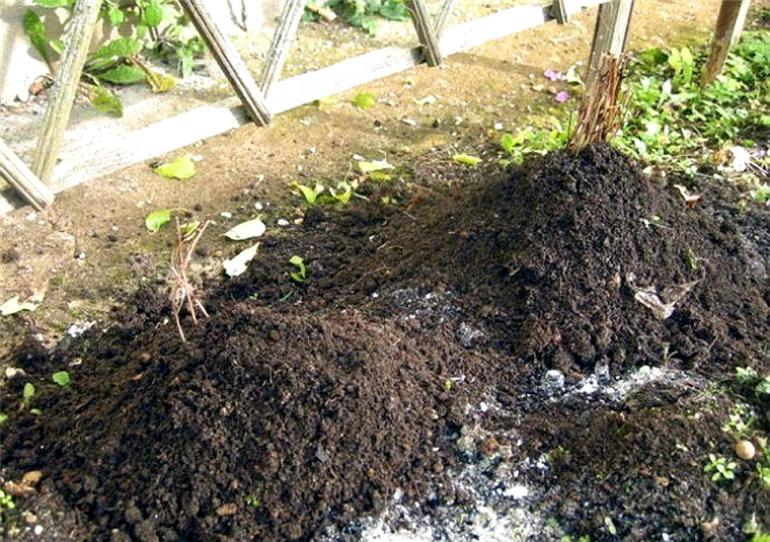
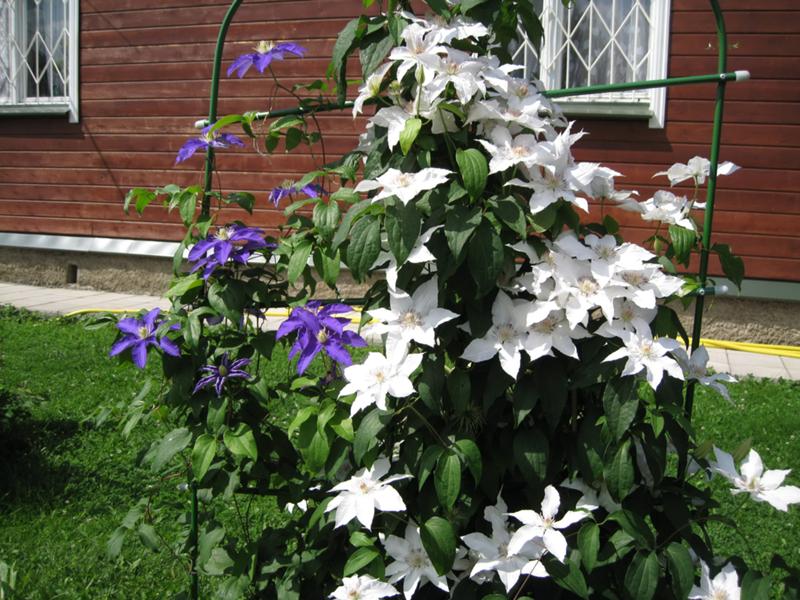
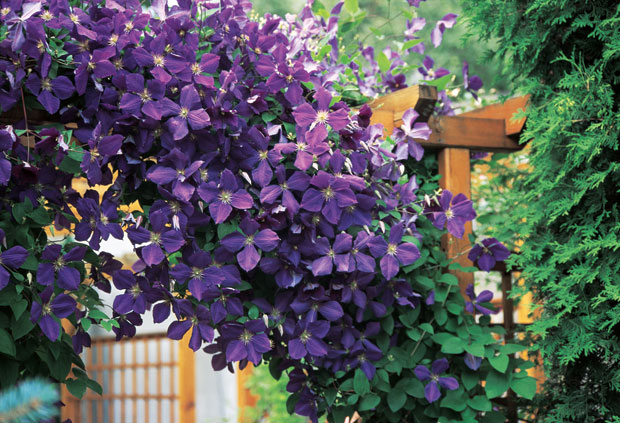
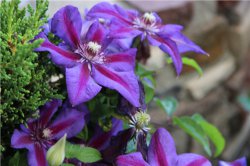 Clematis - the best varieties for the Moscow region
Clematis - the best varieties for the Moscow region